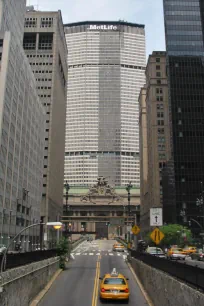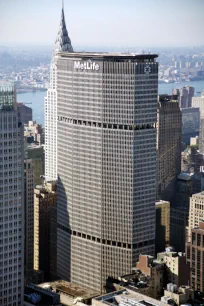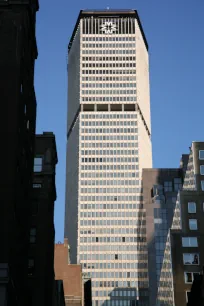The Metlife Building, still known by some as the “Pan Am Building”, has long been one of the most controversial skyscrapers in New York. In the twentieth century, this was one of the most disliked buildings in the city.
A Blocked View
The main reasons for the dislike of the New Yorkers for this building are the blocking of the view of Park Avenue and the massive size of the structure, which has often been criticized as ‘cheap quality’ or ‘monumental bad architecture’. On the other hand, the structural concept of the building is very intriguing and its sheer massiveness symbolizes New York as a huge compact city.
Due to its location, though, the building completely blocks the view over Park Avenue and the – much more appraised – New York Central building (Helmsley Building), which dates from 1929.
History
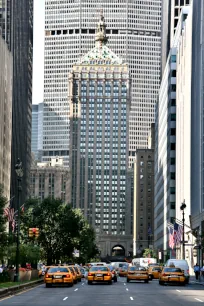
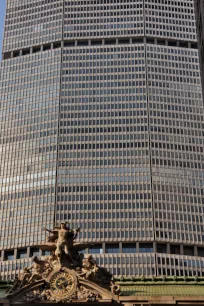
In 1958, the joint owners of the area located between the Grand Central Terminal and the New York Central Building – the New York Central Railways and the New Haven Railways – decided to develop the area.
Emery Roth & Sons were chosen as the architects for Grand Central City, as the project was called. Their first plan, which would not have blocked the view on Park Avenue, was considered too modest by Erwin Wolfson, the constructor. Richard Roth then consulted Walter Gropius and Pietro Belluschi, two of the most renowned architects of their time, who decided to completely review the plan and create an octagonal building.
The original north-south alignment was replaced by an east-west alignment, thus blocking the view on Park Avenue. Gropius also planned to have the New York Central building torn down to create a park next to the tower.
Design
The design was inspired by a never built project from Le Corbusier and by the slender Pirelli Tower in Milan (Gio Ponti and Pier Luigi Nervi, 1959). It consisted of a tower of 49 stories resting on a 10-story base. The exterior is covered with concrete panels to strengthen the building visually. The 246-meter / 808-ft-tall building was completed in 1963 and incorporates an immense 390,700 m2 office space.
MetLife Building
Originally the project was called Grand Central City, but was renamed in 1960 after its main tenant, the Pan American Airways (or Pan Am in short). In 1981 the building was sold to the MetLife insurance company for $400 million. Pan Am remained a tenant until 1991, when they moved their headquarters to Miami. Two years later, the tower was officially renamed MetLife Building.


